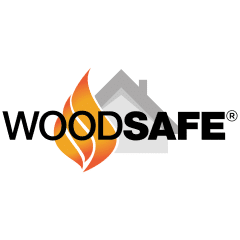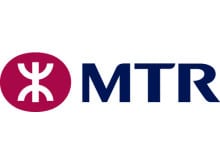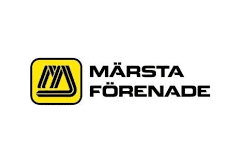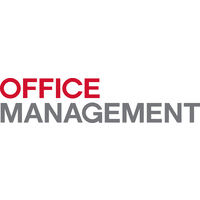Course facts
- Course locations: No geographical restrictions
- Time required: Approx. 1.5 hours
- Maximum number of participants: Unlimited
- Meets the Swedish Work Environment Authority's requirements & guidelines
- Available languages: Swedish & English
- Price: 8 490 SEK
-
Remain calm at a crisis
Why should your company conduct an evacuation drill?
When you need to evacuate your employees and business, chaos and confusion can reign, and the situation can quickly become grave. Panic and decisions made under stress can lead to serious injuries to employees and damage to property, which could have been avoided. It’s essential to have a well-established evacuation plan and that your employees are aware of the escape routes, who the fire wardens are and their areas of responsibility.
How is an Evacuation drill carried out?
The Evacuation Drill is planned between the instructor from Safe@Work and the person responsible for fire safety at your workplace. The preplanned workplace evacuation drill will be observed by the instructor.
Examples of staged workplace emergencies leading to evacuation could include fire, gas leaks, bomb threats, or other potential risk situations. After completing the drill, the instructor can recommend suggestions for improvements and feedback to the fire wardens.
Would you like to carry out an evacuation drill?
Caall us at +468-622 57 00 / Or send an email to info@safeatwork.nuIs there a need for fire wardens?
A fire warden helps to ensure that an evacuation is carried out as safely as possible and helps those in need of extra assistance. It is highly recommended to have several trained fire wardens at your business, which will be vital in creating the right conditions for a safe evacuation. If needed, we recommend that you train several wardens in connection with an Evacuation Drill. On completing the training, the participants will receive a fire wardens vest so they can easily be identified in the event of an emergency evacuation.
Combine several courses to create a comprehensive day of training
The Evacuation Drill could be carried out at the same time as new or existing fire wardens are trained, and a Fire Safety Training course is being held, giving your business a productive full day of training, and would combine to help make your business a Firesafe Workplace
The following are taken up during the Evacuation Drill:
- What is an escape route?
- Alarm routines and what to prioritise
- Assembly point and evacuation plan
- Risks assessment and what is threatened in a fire?
- Choice of extinguishing equipment and extinguishing agents
Client quotes
-
Describe your experience of the educational delivery. “Simple, nice and professional.”
What can we change to make your experience with us better? “Not much. Everything worked perfectly.”
How likely are you to choose Safe@Work for similar education in the future? “Very likely”
Would you recommend Safe@Work to other companies? “Yes” -
-

-
Kristian Bergqvist
-
Product Manager at Ramirent
-
Client quotes
-
How would you rate your overall experience with us at Safe@Work? “10/10”
Describe your experience of the course delivery: “Good communication with both Daniel and David. You have been very accomodating through all curveballs that have been in connection with the planning an executing of this training.”
Would you reccomend Safe@Work to other companies with similar training needs? “Yes”
Why? “Very accommodating and flexible when planning the training. You enabled a pracitcal training on site during a period when all physical meetings involve a risk. We are very satisfied with both the layout and instructor. All participants have expressed that they got a lot of the day. Thank you! We will definitely recommend you if the oppurtunity arises” -
-

-
Lizette Tapper
-
Property manager at Heimstaden Förvaltnings AB
-
Client quotes
-
Best Transport provides more than 3,000 transports per day distributed across our 150 vehicles. Some of the assignments requires that we drive with blue lights on. These assignments are performed by our drivers who have completed Safe@Works emergency driver training. Best has chosen to employ Safe@Work, which we believe meets the level of education we have as a requirement and which we are very satisfied with!
-
-

-
Fredrik Löwendahl
-
Carrier manager at Best Transport
-
Client quotes
-
How would you rate your overall experience with Safe@Work: “10/10”
Would you recommend Safe@Work to other companies with similar educational needs? “Yes”
Why? “Responsive to customer requests, quick and easy answers to questions before the course, etc.”
How likely are you to choose Safe@Work for similar education in the future? “Very likely” -
-

-
Jan Bäckström
-
Training coordinator - Arriva Sverige AB
-
Client quotes
-
Would you recommend Safe@Work to other companies with similar educational needs? “Yes”
Why? “Good trainers, well thought out material and relevant practical exercises”
How likely are you to choose Safe@Work for similar training in the future? “Very likely”
What can we change to make your experience with us better? “Satisfied with the program, looking forward to e-learning as continuing education/rehearsal.” -
-

-
Rolf Skoog
-
Operations manager at Vybuss
-
Client quotes
-
Would you recommend Safe @ Work to other companies with similar training needs? “Yes”
Why? “I think Safe@work has been responsive to our needs and has also been flexible with our wishes. This, together with showing how they work to minimize the risk of infection now in Covid times, plus a good administration, makes me set high marks as evaluation. ”
How would you rate your overall experience with us at Safe@Work? “10/10”
Describe your experience of the training delivery. “I have not participated in the training myself, but our employees were satisfied. They have replied that they thought it was very instructive and informative. Good to try and felt very good as they told me.– Camilla Greuel, HR Business partner Carlsberg Sweden
-
-

-
Camilla Greuel
-
HR Business partner, Carlsberg Sverige
-
Client quotes
-
Describe your experience of the training delivery: “Good facility with friendly staff and very competent instructors with the right pedagogy!“
Would you recommend Safe@Work to other companies with similar training needs? “Yes”
Why? “Among other things, we have used a supplier in another country before, who although they were good in many ways and had a very nice facility. However, we believe that your pedagogy and the practically relevant elements that are performed are more correct regarding the application in reality. “ -
-

-
Robert Stake
-
Head of Business Area - Academy / Head of Business Support - Scutus Protection AB
-
Client quotes
-
How well did the course-delivery meet your expectations? “Very pleased”
How would you rate your overall experience with us at Safe@Work? “10/10”
Would you recommend Safe@Work to other companies with similar educational needs? “Yes”
Please tell us why! “Quick response, easy handling and a short preparation time.” -
-

-
Hanna Järnmark
-
HR specialist at Fonus
-
Client quotes
-
Please describe your experience of the educational delivery: “Nice response from your side, smooth booking.”
What can we change to make your experience with us better? “Nothing to remark on”
Would you recommend Safe @ Work to other companies with similar educational needs? “Yes”
Why? “Always better to get the education to the workplace, the rating of the education from those who passed it was high and it is important.” -
-

-
Caroline Andersson
-
Quality - Environment - Work environment coordinator at COBAB
-
Client quotes
-
Describe your experience of the training delivery: “It was a really joyful and informative training. Having the opportunity to get hands on experience on how to extinguishing fire using extinguisher or fire blanket is the ideal way of getting a practical experience. The evacuation training was also a big plus as our evacuation leaders got a very instructive training onto how to react in case of a fire and how to help other employees to evacuate the building.”
Would you recommend Safe@Work to other companies with similar training needs? “Yes, very instructive and informative training provided by Michael.”
How likely are you to choose Safe@Work for similar education in the future? “Very likely” -
-

-
Feiruz Alamiri
-
Scientist at MinervaX AB
-
Client quotes
-
TOOLS Sweden has about 200 drivers on the roads daily. In line with our well-established HSE work (Health-Safety-Environment), we saw the need for a solid driver training for our staff, a training who secured both a safe and a eco-friendly way of driving. We chose Safeatwork because they maintain a high quality level, with a good balance between the theoretical and the practical part. The training has been very well received by our staff.
-
-

-
Stefan Gustafsson
-
Quality and Environment Manager Tools Sweden
-
Client quotes
-
I see Safe@Work as a competent and serious organizer of training for professional drivers. Especially in the field of emergency driver training. The content of the courses is based on the criteria that today’s research and training advocate for special environments. The courses include theory and practice in well-balanced forms.
-
-

-
Peter Nord
-
Then: Training officer in charge at the Swedish Police Academy - Now: Instructor at Safe@Work
-
Client quotes
-
Would you recommend Safe@Work to other companies with similar training needs? “Yes”
Why? “Friendly approach and quick response both with order, sending invitations and statistics. Thanks!”
How likely is it that you would choose Safe@Work for similar training in the future? “Very likely”
How would you rate your overall experience with us at Safe@Work? “10/10” -
-

-
Mikaela Vikesson
-
HR & Management Support at Målerifakta AB
-
Client quotes
-
Safe@Work is our given partner in education at all levels. With great flexibility & fantastic instructors, we have always received great value for our money. We highly recommend Safe@Work to all our partners. // Carl-Olov Carlsson, Owner of HBC properties
-
-

-
Carl-Olov Carlsson
-
Owner and CEO of Halbeco Real Estate
-
Client quotes
-
How would you rate your overall experience with Safe@Work? “9/10”
Would you recommend Safe@Work to other companies with similar educational needs? “yes”
Why? “Good customer service, well thought out” -
-

-
Anna Graham
-
HR manager, Swedish Tourist Association
-
Client quotes
-
How would you rate your overall experience with us at Safe@Work? “9/10”
How likely are you to choose Safe@Work for similar training in the future? “Very likely”
Would you recommend Safe@Work to other companies with similar educational needs?“Yes”
Why? “Positive attitude. All parts where completed on time and I felt appreciated as a customer.” -
-

-
Christina Strozyk
-
Quality & Environment Manager at Granngården
-
Client quotes
-
How would you rate your overall experience with us at Safe@Work? “10/10”
How likely is it that you would choose Safe @ Work for similar training in the future? “Very likely”
Would you recommend Safe@Work to other companies with similar training needs? “Yes”
Why? “Good course plan and teacher! 🙂“ -
-

-
Ulrika Hedin
-
Customer service manager - Woodsafe Timber Protection AB
-
Client quotes
-
Safe@Works exercises are well balanced with an insight into the risks involved in handling vehicles as an emergency driver. The theory blocks are well focused on the professional driver and their special needs for a safe work environment. The theory also encompasses insight-enhancing thoughts about the difficulties and dangers of road traffic, but also how the individual driver can utilize the knowledge and prevent risks.
-
-

-
Peter Nord
-
Then: Training officer in charge at the Swedish Police Academy - Now: Instructor at Safe@Work
-
Client quotes
-
Would you recommend Safe@Work to other companies with similar training needs? “Yes”
Why? “An education that far exceeded my expectations. Daniel carried out the training in a way that meant that you never lost focus and with a wonderful dialogue with a lot of recognition and laughter.”
Describe your experience of the training delivery. “It has been very good from start to finish. Nice and helpful already at the first contact.”
What can we change to make your experience with us better? “I’m happy with everything” -
-

-
Veronica Sundström Gund
-
Facility Manager at Bergs municipality
-
Client quotes
-
”When we were looking for a supplier for our safety program – Come home safe – We were looking for a partner who could deliver an effective safety day to my sales representives in the field, including web-based follow-up courses. We wanted them to be experienced, have knowledge about laws and regulations, be efficient and flexible. All parameters were met both before, during and after delivery. Safe At Work provides a personal treatment with driven and comitted staff, all at just the right level based on us as a customer. I can warmly recommend a collaboration with Team Daniel.”
-
-

-
Johan Blomberg
-
Field sales manager Atria Sweden
-
Client quotes
-
How would you rate your overall experience with Safe@Work? “10/10”
How likely are you to choose Safe@Work for similar education in the future? “Very likely”
Would you recommend Safe@Work to other companies with similar educational needs? “Yes. Daniel Lundberg is very professional and accommodating. He delivers excellent service and always has the customer in focus.” -
-

-
Malin Knutsson
-
Educational developer at MTR
-
Client quotes
-
The Swedish Sea Rescue Society’s volunteer sea rescuers drives the organization’s emergency vehicles when smaller rescue boats/ hovercrafts are transported on roads. Therefore, we need a high-quality emergency driver training that could be adapted to our specific needs. We chose Safe@Work as our supplier and their e-learning was seamlessly integrated into our training platform. The training has met our high quality requirements and Safe@work has shown great willingness to cooperate in order to meet our wishes.
-
-

-
Peter Andreasson
-
Chief of training - Swedish Sea Rescue Society
-
Client quotes
-
Would you recommend Safe@Work to other companies with similar training needs? “Yes”
Why? “The right level on the course content”
How likely is it that you would choose Safe@Work for similar training in the future? “9/10”
How would you rate your overall experience with us at Safe@Work? “9/10” -
-

-
Roger Werneräng
-
HR manager at Svenska Foder AB
-
Client quotes
-
How likely are you to choose Safe@Work for similar education in the future? “Very likely”
We would love to hear why! “Safe@work instructors prepared a course for us based on our requests, hence the course day was relevant and perfectly covered the things we wanted to learn about.”
If you don’t mind, please describe your experience with us at Safe@Work: “The whole of our team had a great experience having a tailor made driving course with Safe@work. Our needs were taken into account and the friendly and professional instructors did a great job making the training day fun, educational and memorable. We are also grateful for the instructors’ flexibility and allow us to practice and finish the last exercise for an extra half hour.” -
-

-
Gaia Banelyte
-
Research assistant - Swedish University of Agricultural Sciences
-
Client quotes
-
”The web trainings from Safeatwork has been good and easy for us to complete. The courses have also been perfect to take when we are currently in a pandemic. The courses Ecodrive and Traffic Safety have had a good content and high quality. We can warmly recommend Safeatwork to others. ”
-
-

-
Sofie Edström
-
HR and sustainability strategist - Pite Energi
-
Client quotes
-
How would you rate your overall experience with Safe@Work “9/10”
Please describe your experience of the educational delivery “We were satisfied with the lecture and even the few who were not interested from the beginning became interested. The lecture gave rise to reflections at the lunch table. The lecturer did not become long-winded, and thus not boring. We could ask questions and discuss meanwhile.”
Would you recommend Safe@Work to other companies with similar educational needs? “Yes”
Why? “Knowledgeable, engaged and pleasant lecturer which made you interested.” -
-

-
Tuula Titoff
-
Administrator at Mediel AB
-
Client quotes
-
How well did the delivery meet your expectations? “Very pleased”
Would you recommend Safe@Work to other companies with similar training needs? “Yes”
How likely is it that you would choose Safe@Work for similar training in the future? “Very likely”
How would you rate your overall experience with us at Safe@Work? “9/10” -
-

-
Rosita Gradin
-
Owner of Södermalm Traffic School
-
Client quotes
-
Would you recommend Safe@Work to other companies with similar educational needs? “Yes”
Why? “Top service with fast feedback and a flexible setup.”
How would you rate your overall experience with us at Safe@Work? “10/10”
Describe your experience of the educational delivery. “Nice and very knowledgeable course leader who got everyone involved during the training.” -
-

-
Alexandra Bojarzyn
-
Quality - Environment - Work environment coordinator at Märsta Förenade
-
Client quotes
-
How well did the course delivery meet your expectations? ”Very pleased”
Would you recommend Safe@Work to other companies with similar training needs? ”Yes”
How likely is it that you would choose Safe@Work for similar training in the future? ”9/10”
How would you rate your overall experience with us at Safe@Work? ”9/10” -
-

-
Stefan Frantz
-
Service Director at Office Management
-
Client quotes
-
How well did the delivery meet your expectations? “Very pleased”
Would you recommend Safe@Work to other companies with similar training needs? “Yes”
How would you rate your overall experience with us at Safe@Work? “8/10”
How likely is it that you would choose Safe@Work for similar training in the future? “Very likely” -
-

-
Robert Lundström
-
Authorized Accountant / Partner at Revideco AB
-
Client quotes
-
How would you rate your overall experience with us at Safe@Work? “8/10″
Would you recommend Safe@Work to other organisations with similar needs? “Yes”
Why? “Excellent service and fruitful E-learning and valuable Training!”
How likely are you to choose Safe@Work for similar education in the future? “Very likely” -
-

-
Thomas Engström
-
CEO at Kontrollerad Bilverkstad
-
Client quotes
-
In order to meet the demands for training and events that are outside of our area of expertise, Safe@Work is a very competent and customer-oriented partner. We are very pleased with the collaboration that has both created new contacts and strengthened the cooperation with several of our most important customers.
-
-

-
Hans Löfgren
-
CEO of Stockholm Road Safety Center
-
Client quotes
-
Would you recommend Safe@Work to other companies with similar training needs? “Yes”
Why? ““It was a smooth and good setup, everything worked very well.”
How likely is it that you would choose Safe@Work for similar training in the future? “9/10”
How would you rate your overall experience with us at Safe@Work? “10/10” -
-

-
Tonny Jakobsen
-
Franchisee - Ångtvättbilen
-
Client quotes
-
“Unionen Östra Sörmland/Gotland has had a long and rewarding collaboration with Safe@Work. Previously mainly through practical car safety training, but in recent years we have included a broader overall concept with, among other things, our own road safety policy. With all the professional support that Safe@Work has been able to deliver, I know that our employees can continously develop their competence and that our new employees can quickly gain the safety awareness that we require. An advantage of Safe@Work is that they can provide both targeted actions aswell as a complete package. An offer ranging from digital courses to physical safety equiptment.”
-
-

-
Henrik Bjugård
-
Regional manager, Unionen
-
Client quotes
-
“We at IKEA Workspaces had the great pleasure of spending two full days with Daniel. Listening, workshopping, doing exercises and learning all about ergonomics and why we all work the way we do. He gave us many insights and opened up a “new” way to approach the subject. Daniel shared his knowledge in a fun, humble and human manner. I would absolutely recommend him to everyone – as we all need to know more about this important subject.”
-
-

-
Jeanette Buschow
-
Range communicator - IKEA Workspaces
-
Client quotes
-
Would you recommend Safe@Work to other companies with similar educational needs? “Yes”
Why? “Very good attitude and your instructor is very competent and educational”
Please rate your experience: Quality of education 5/5 – Simplicity when ordering 5/5 – Responsibility 5/5 – Flexibility 5/5 – Responsiveness 5/5 -
-

-
Joakim Malmström
-
Head of Unit at City of Gothenburg
-
Client quotes
-
Would you recommend Safe@Work to other companies with similar training needs? “Yes”
Why? “Flexible based on the need we had”
How would you rate your overall experience with us at Safe@Work? “8/10”
How likely is it that you would choose Safe@Work for similar training in the future? “Very likely” -
-

-
Patrik Sewerin
-
Gunnebo Castles and Gardens, Coffee house and tavern
-
Client quotes
-
How would you rate your overall experience with us at Safe@Work? “9/10”
How likely is it that you would choose Safe@Work for similar training in the future? “Very likely”
Would you recommend Safe@Work to other companies with similar training needs? “Yes”
Why?“Professional delivery and good contact with Daniel x2” -
-

-
Niklas Nyberg
-
Sales manager at Arvid Nordquist
-
Client quotes
-
SWould you recommend Safe@Work to other companies with similar training needs? “Yes”
Why? “Easy and smooth. Quick response and nice treatment.”
How likely are you to choose Safe@Work for similar training in the future? “Very likely”
Hur skulle du betygsätta din helhetsupplevelse hos oss på Safe@Work: “10/10” -
-

-
Helena Lantz
-
CEO - Trädgårdsinteriör
-
Client quotes
-
Describe your experience of the course delivery: “Flexible and manageble, flexible to be able to choose both time and place.”
What can we change to make your experience with us better? “Don’t know, everything felt good”
Would you recommend Safe@Work to other companies with similar training needs? “Yes”
Why? “Flexible with web training, especially during the pandemic but also in better times since you can stay in the workplace” -
-

-
Henrik Karlsson
-
Team leader, measurement at Veidekke
-
Client quotes
-
How well did the course meet your expectations? “Very pleased”
Would you recommend Safe@Work to other companies? “Yes. Easy to deal with, good quality, knowledgeable, etc”
How likely are you to choose Safe@Work for similar education in the future? “Very likely”
What can we change to make your experience with us better? “We are very satisfied” -
-

-
Olof Wixe
-
Sales Director at Dormer
-
Client quotes
-
How would you rate your overall experience with Safe@Work? 10/10
Describe your experience of the educational delivery. “Those who participated in the Safety driving told us that they were super satisfied and as a client I also think that it was a structured process on your part where you always followed up and been open when I needed to make changes to the booking.”
-
-

-
Frida Wihlborg
-
Project Manager på Novonordisk
-
Client quotes
-
How would you rate your overall experience with us at Safe@Work? “10/10”
Would you recommend Safe@Work to other companies with similar training needs? “Yes”
Feel free to tell us why! “Incredibly good educator, knowledgeable in his field. Liked by all, down to earth and responsive.”
What can we change to make your experience with us better? “Nothing.”
-
-

-
Daniel Torefeldt
-
Country Manager at City Self-Storage Sweden
-
Client quotes
-
Would you recommend Safe@Work to other companies with similar training needs? “Yes”
Why? “Professional training in a flexible format.”
How likely is it that you would choose Safe@Work for similar training in the future? “Very likely”
What can we change to improve your experience with us? “The scenes with victims of traffic accidents were very moving and have made several collegues think a little extra. Feel free to use more examples from reality.
How would you rate your experience with us at Safe@Work? “9/10”
Feel free to describe your experience of the course delivery: “Fast and agile” -
-

-
Nina Karlsson
-
Service and Support Manager at DiaSorin AB
-
Client quotes
-
Why would you recommend Safe@Work to others? “High service and great responsiveness. A lot of the practical was nice to avoid dealing with yourself, after the layout and course content was clear. And dates 🙂 Well arranged during the course day, easy and simple. Just to participate. Good arranged with coffee , food etc. Nothing that was missing. Very satisfied. “
Describe your experience of the educational delivery. “Simple, safe and professional.” -
-

-
Emma Rengbo
-
HSSE Coordinator Nordic på E.ON
-
Client quotes
-
“I belive that Safe@Work has, with their professional skills, delivered well-adapted educations and created lessons in a clear, varied and pedagogical way based on the requirements we asked for.”
-
-

-
Anna A Groth
-
Customs Inspector & Traffic Instructor at the Swedish Customs
-
Client quotes
-
Describe your experience of the course-delivery. “Fast delivery of e-learning and serious, educated course leaders”
How likely are you to choose Safe@Work for similar education in the future? “Very likely”
Why? “Great delivery and products!” -
-

-
Joakim Hansson
-
CEO on Halleskog & Hansson Rental AB
-
Client quotes
-
How would you rate your overall experience with us at Safe@Work? “10/10”
Have you purchased a similar course before? “Yes, with another organizer”
How likely are you to choose Safe@Work for similar training in the future? “Very likely”
Would you recommend Safe@Work to other companies with similar educational needs?“Yes” -
-

-
Alexandra Bojarzyn
-
Quality - Environment - Work environment coordinator, Skanska
-
Client quotes
-
Would you recommend Safe@Work to other companies with similar training needs? “Yes”
Why? “Good communication, quick response and an education that met our expectations.”
How likely is it that you would choose Safe@Work for similar training in the future? “Very likely”
What can we change to improve your experience? “Nothing. Continue being you!” -
-

-
Marie Olsson
-
Quality and safety manager - Depona AB
-
Client quotes
-
“It has been a pleasure to work with you and you are responsive to our point of views and requests. Your courses that we have performed are professionally designed and deeply touch the participants. They provide valuable insights on what, and how to think about safe driving, both for themselves and others in traffic. “
-
-

-
Tony Ohlsson
-
Work environment specialist, Stora Enso
-











